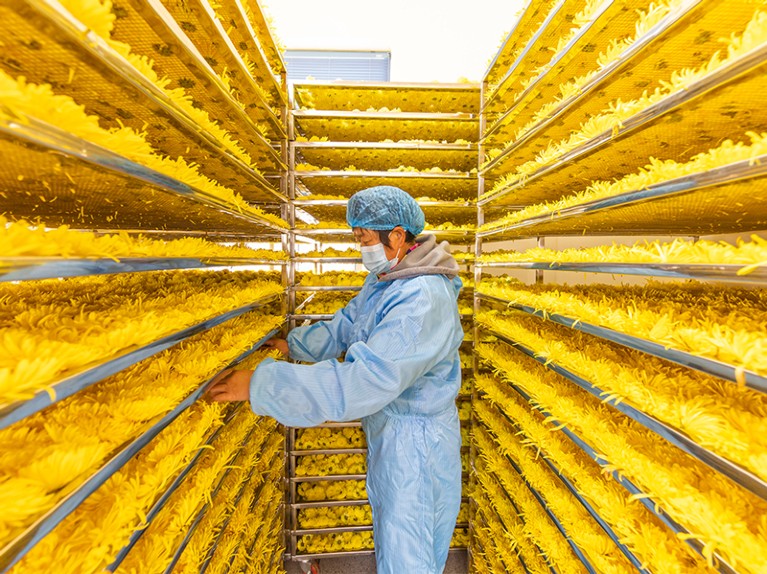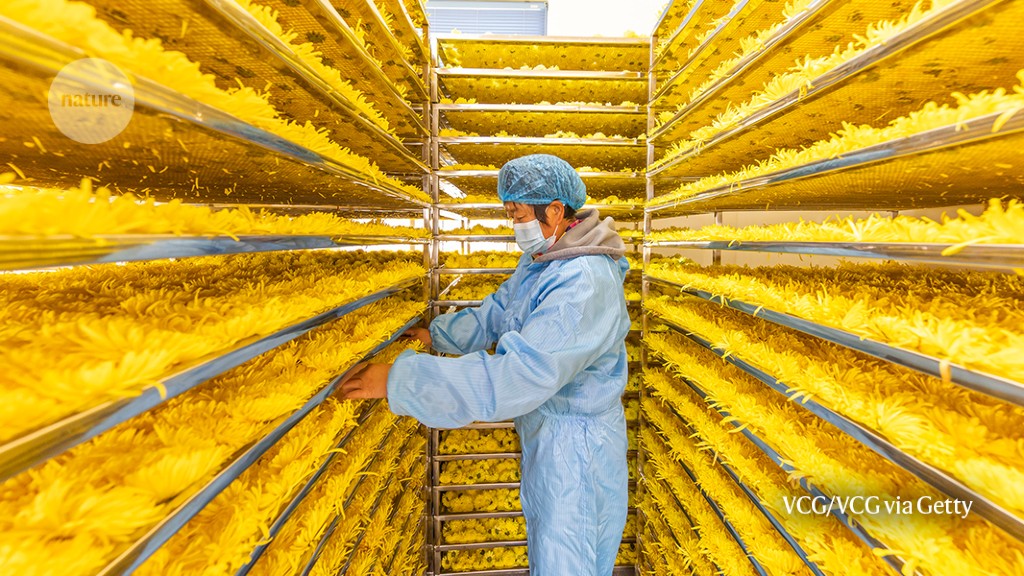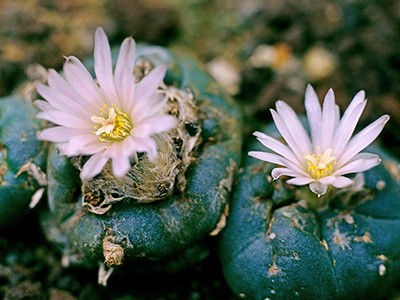[ad_1]

Seemingly innocent chrysanthemums make a toxin utilized in pesticides and louse shampoos.Credit score: VCG/VCG by way of Getty
Most Scrumptious Poison: The Story of Nature’s Toxins — From Spices to Vices Noah Whiteman Little, Brown Spark (2023)
One stunning summer time’s day about 30 years in the past, my father had a mini-stroke. He was recognized with a coronary heart arrhythmia and was prescribed the blood-thinning drug warfarin. However after a number of years of relative stability, exams confirmed that his physique was now not metabolizing the warfarin correctly. Trying to find a proof, medical doctors ultimately realized that my father had began consuming grapefruit juice along with his breakfast. The fruit comprises chemical compounds referred to as furanocoumarins, which cease warfarin being metabolized within the liver.
As my father’s expertise exhibits, crops that we’d consider as benign can — relying on our circumstances — be something however. In reality, many are bioactive. In Most Scrumptious Poison, biologist Noah Whiteman delves into why crops’ myriad pure toxins arose, how animals have tailored to them and the way people have tried, for higher or worse, to harness them for our profit, with out absolutely understanding the results that these poisons have on our brains and our bodies.
Whiteman explores these concepts by taking a look at plant chemical compounds that individuals use for medication, meals and pleasure, together with toxins reminiscent of ethanol (from plant sugars) that may find yourself as addictive substances.
Discovering medical worth in mescaline
Having misplaced his personal father to alcohol-use dysfunction, the creator seeks to grasp the biochemistry and genetics of alcohol habit, specializing in the attainable function of proteins within the mind referred to as GABAA receptors. When activated by molecules of the neurotransmitter GABA, these receptors have a chilled impact. Because the creator finds, it’s not solely naturally occurring GABA molecules that set off these receptors — ethanol appears to take action too, as do some generally used sedatives. When contemplating how this interplay may need affected the individuals in his life who relied on alcohol, Whiteman writes: “Their GABAA receptors fired away because the alcohol did its factor, dampening their worries, numbing their ache, and reworking them into totally different individuals.”
GABAA receptors are additionally activated — no less than in some species — by the chemical α-pinene, which is discovered within the oil and resin produced by balsam firs and their family. Fir timber, Whiteman explains, most likely developed the power to make the chemical to entice insect predators and cease them from consuming their leaves. Whether or not α-pinene interacts with GABAA receptors in individuals has but to be proved, however the creator proposes that this may clarify a number of the advantages of strolling within the deep woods. For a lot of, the scent of balsam appears to gradual time, making the world fall away for a second.
Why do crops make chemical compounds that concentrate on the nervous system? As Whiteman notes, it most likely provides them an evolutionary edge. Vegetation are simple targets for herbivores, and a chemical defence might be essential for survival.
Evolutionary quirks
Elsewhere within the guide, Whiteman has extra vibrant tales illustrating the numerous makes use of that people have for plant chemical compounds. The daisy household alone, for example, makes alkaloids, flavonoids and terpenoids, and people have co-opted, copied and synthesized these chemical compounds to be used as anti-inflammatory medicines, pesticides, antimalarial medication and extra.

Grapefruit juice comprises a chemical that forestalls medication reminiscent of warfarin from being metabolized by the liver.Credit score: Wellford Tiller/Shutterstock
One daisy, the chrysanthemum, serves for example of how evolutionary quirks can dictate the methods by which we use plant toxins. When you fear about ticks when out strolling, you may depend on an insecticide referred to as permethrin, which is an artificial equal of chrysanthemum chemical compounds referred to as pyrethrins. Each the pure toxin and the artificial model work together with proteins in nerve cells, inflicting uncontrollable firing. These chemical compounds are comparatively innocent to people, however deadly to bugs, due to a single genetic distinction that makes insect nerve cells 100 occasions extra aware of them than are human ones. Pyrethrin is utilized in louse shampoos, and permethrin in insect-repelling clothes and flea collars for canine. However cats should steer clear — one other genetic distinction signifies that they don’t produce the enzyme that enables people and canine to detoxify the chemical.
The grisly trials that gave poison to prisoners
Even spices may need developed as toxins. Mustard oil, for instance, is extremely toxic each to herbivorous bugs and to the crops that make it, which embrace watercress, rocket and wasabi. To stop the toxin from damaging wholesome leaves, the crops make inactive precursors referred to as protoxins. Like “bombs with unlit fuses”, the protoxins are stowed away in a single kind of cell, and the enzymes that activate them are confined in one other. When a leaf is chewed — by a grazing insect or an individual consuming salad — the cells break aside, the protoxins and enzymes come into contact and, kaboom, the protoxin is transformed into poison. The insect may die or go away its meal uneaten, however people ingest such small quantities of the toxin relative to our dimension that it’s not dangerous to us. As a substitute of being poisoned, we are able to benefit from the spicy bloom of mustard flavour in our mouths.
The tales Whiteman chooses are sometimes advanced, as a result of every class of chemical exists in an internet of associated poisons. In locations it’s simple to get misplaced within the chemistry, however the creator deftly navigates readers by nature’s chemical mazes. In doing so, he reveals that plant toxins have helped form who we’re right now. They develop our minds, work together with vital enzymes and receptors in our our bodies, boost our meals and medicate us.
The creator’s ardour for his subject material comes by on nearly each web page of Most Scrumptious Poison, and the guide’s illustrations — collages of key crops, chemical buildings, goal species and human use — present succinct visible summaries. Aficionados of chemical kind, individuals concerned with botanical pharmacology and toxicology, and those that are merely curious concerning the origins of their medication and spices will discover a lot to take pleasure in on this fascinating compendium.
Competing Pursuits
The creator declares no competing pursuits.
[ad_2]




